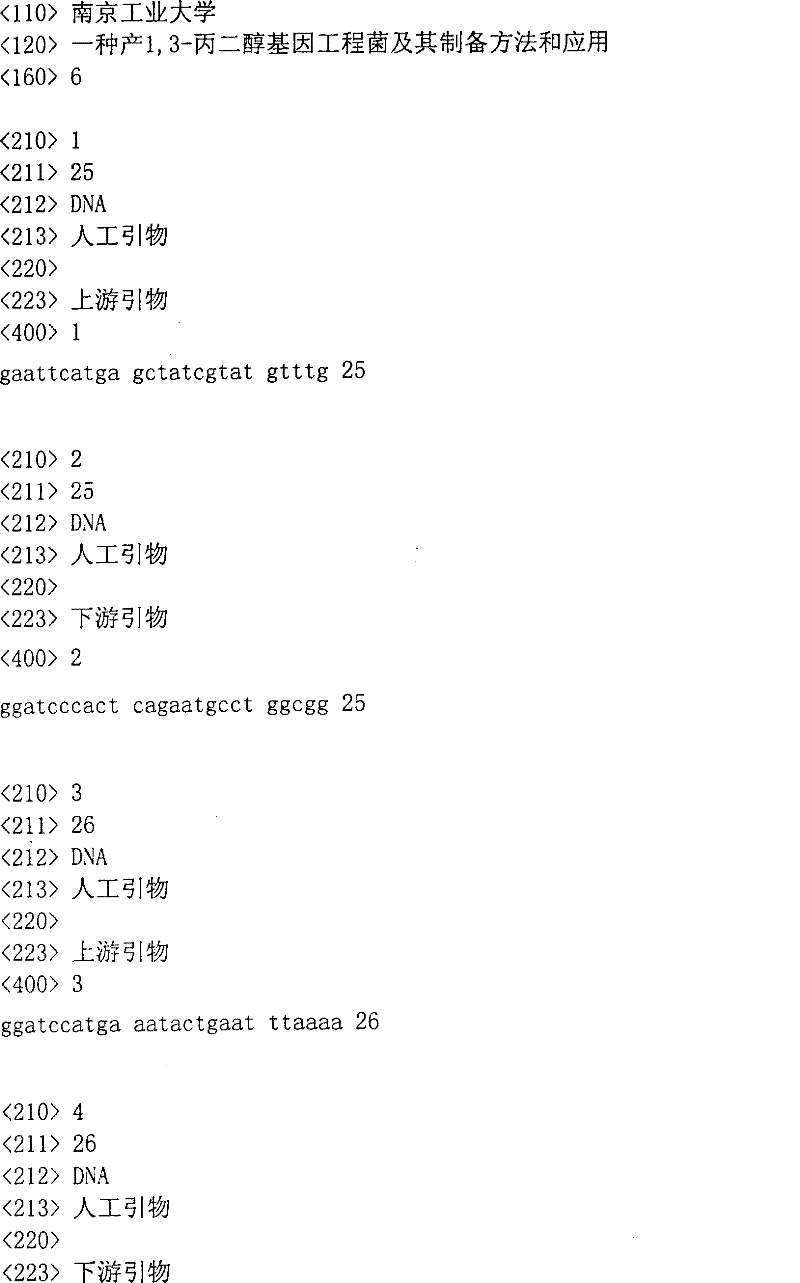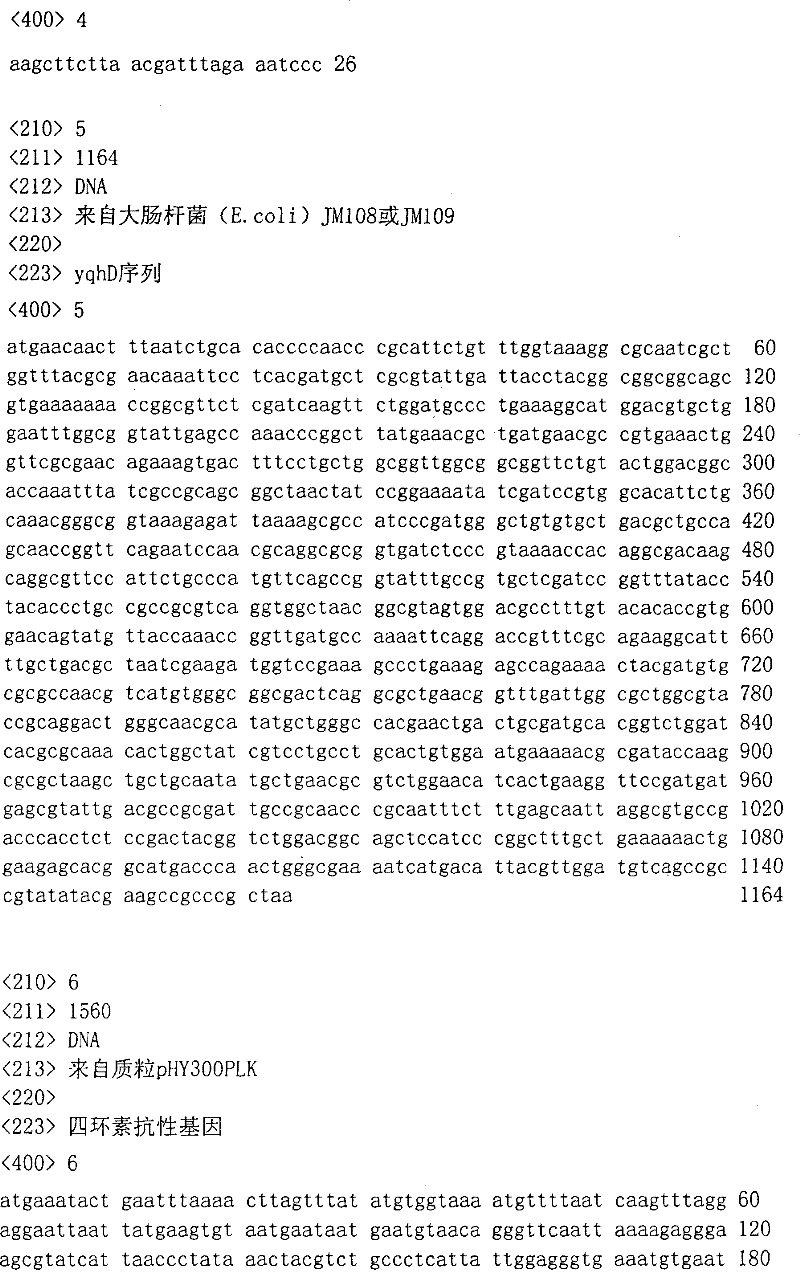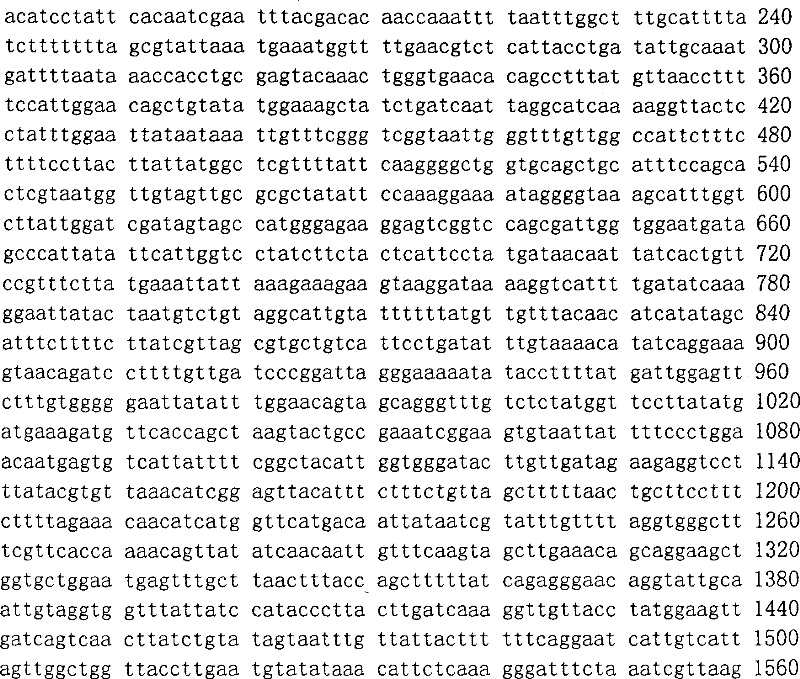A kind of 1,3-propanediol-producing genetically engineered bacteria and its preparation method and application
A technology of genetically engineered bacteria, propylene glycol, applied in genetic engineering, botanical equipment and methods, microorganism-based methods, etc., can solve problems such as low yield levels
- Summary
- Abstract
- Description
- Claims
- Application Information
AI Technical Summary
Problems solved by technology
Method used
Image
Examples
Embodiment 1
[0050] Example 1: Klebsiella pneumoniae ATCC 25955-pUC18-yqhD-Tet R build
[0051] (1) Cloning of the gene yqhD: According to the sequence of the yqhD gene in Escherichia coli E.coli K12 published by Genebank, the primers required for synthetic PCR were designed:
[0052] P1: 5'-GAATTCATGAGCTATCGTATGTTTG-3' (SEQ ID No. 1)
[0053] P2: 5'-GGATCCCACTCAGAATGCCTGGCGG-3' (SEQ ID No. 2)
[0054] The two ends of the primers were respectively introduced into EcoR I and BamHI, and the PCR reaction was completed using E. coli E.coli JM 108 or E.coli JM 109 genomic DNA as a template: PCR reaction conditions: 95°C denaturation for 5min, 94°C for 30sec, 52°C for 30sec, 1min at 72°C, 30 cycles, and then extended at 72°C for 3min. The obtained PCR product was confirmed by electrophoresis analysis. After purification by PCR product purification kit, it was ligated with pMD18-T vector for sequence determination, and digested with EcoR I and BamHI. Recombined pMD18-T vector, recovered the 1....
Embodiment 2
[0059] Example 2: Transformation of Klebsiella pneumoniae ATCC25955 with recombinant plasmid pUC18-yqhD-TetR
[0060] The recombinant plasmid pUC18-yqhD-Tet was purified by electroporation R Klebsiella pneumoniae Klebsiellapneumoniae ATCC 25955 was transformed, and the electroporation condition parameters were: voltage 2.5kv, resistance value 200Ω, pulse time 4.5msec. After the electric shock transformation is completed, spread the electric shock-treated Klebsiella pneumoniae ATCC25955 on the LB medium containing 40 μg / m L tetracycline to obtain a positive clone Klebsiella pneumoniaeATCC25955-pUC18-yqhD-Tet R .
Embodiment 3
[0061] Example 3: Plasmid Stability Investigation of Engineering Bacteria Klebsiella pneumoniae ATCC25955-pUC18-yqhD-TetR
[0062] Inspection method: Pick a single colony from a fresh transformation plate and inoculate it into 3 mL of tetracycline-free LB medium, cultivate it at 37°C for 12 hours as seeds, and replant it for 24 hours, that is, 20 generations of seeding, 5 times of replanting, That is 100 generations, the above bacterial solution was spread on the LB plate without antibiotics, and 100 single colonies were selected from it and placed on the plate with and without tetracycline, cultured at 37°C for 12-16 hours, and compared the effects of adding and not adding tetracycline. The number of colonies on the plate without adding tetracycline is its stability.
[0063]Investigation results: the stability of the plasmid was 100% after 100 generations of breeding.
PUM
 Login to View More
Login to View More Abstract
Description
Claims
Application Information
 Login to View More
Login to View More - R&D
- Intellectual Property
- Life Sciences
- Materials
- Tech Scout
- Unparalleled Data Quality
- Higher Quality Content
- 60% Fewer Hallucinations
Browse by: Latest US Patents, China's latest patents, Technical Efficacy Thesaurus, Application Domain, Technology Topic, Popular Technical Reports.
© 2025 PatSnap. All rights reserved.Legal|Privacy policy|Modern Slavery Act Transparency Statement|Sitemap|About US| Contact US: help@patsnap.com



